Easy Cable Socks – free pattern and tutorial
Here we are then – all ready to start the first tutorial of 2017! Please note – this tutorial is picture-heavy!

If you read yesterday’s post then you’ll know this tutorial is for Easy Cable Socks – and if you haven’t read it, you might want to take a quick look at it (the link is here) before we get started as I’ve tried to answer some of the questions you might have about this sock.
The cables are very simple in construction, just four stitches which twist around each other. This tutorial shows you how to create the cable with a cable needle; there is a method for cabling without a needle but I’m not going to cover that here – you can always search online if you want to look into it.
I just love the smooth lines of these cables, they look just like ropes – you can see why cables work so well in fishermen’s jumpers!

You don’t need a cable needle for this crossed rib heel – you can complete that with your usual needles. Doesn’t this stitch go well with the main rib section? I love the way that you can combine different stitches and techniques to create something that looks as if it should always have been that way!
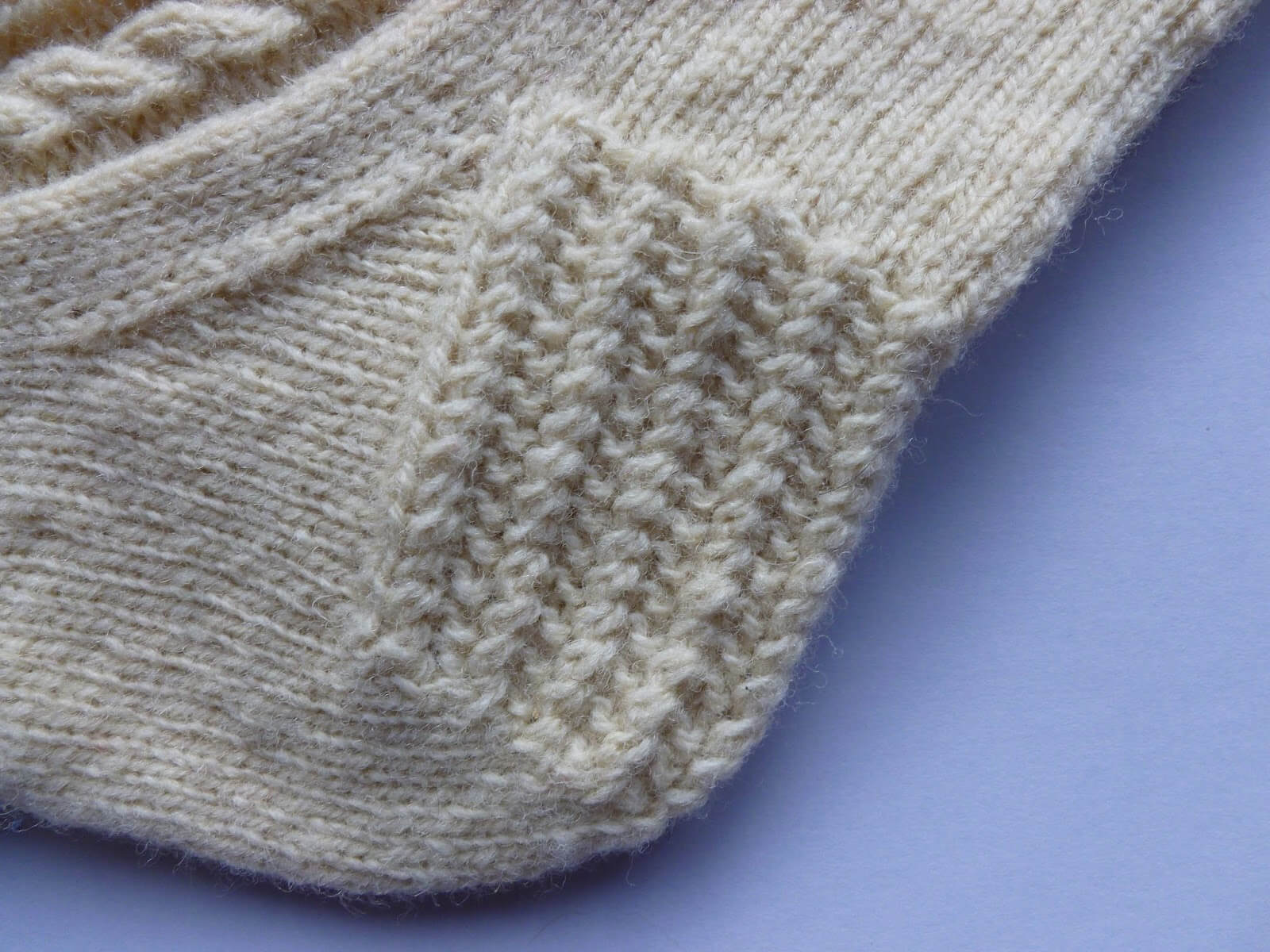
This tutorial is slightly different from the ones I’ve written before in that there are both photos and videos to go along with the written instructions to help you. I’ve put the video links after the photos so you’ll need to get to the end of each section to see them – and I’d recommend that you read each section first anyway before you start knitting so that you’re sure you’re happy with what you’re doing.
Before we launch into the pattern itself, I want to talk to you about the chart that’s included in the pattern along with the written instructions. Some people like charts and others run from them as if their pants are on fire. They are really not that bad, trust me! Think of a chart as a road map, directing your knitting as a map would direct your car on a journey.
This is the chart for the Easy Cable Socks (I’m not quite sure why it’s slightly fuzzy – apologies for that, but you can still read it!):

It doesn’t look that scary, does it? Let’s have a look and see what it’s telling us.
Firstly, you can see that there are 6 rows (these are the numbers going up the right hand side) and 32 stitches (these are the numbers along the bottom). The numbers go outwards from that very first square on the bottom right hand side because that’s where you’ll start from, but we’ll talk about that in a minute.

Every chart is created by a combination of symbols, and there is always a key to tell you what those symbols mean. Remember the road map? You wouldn’t be able to read it without a key to help you and this is the same. Here’s the key for the Easy Cable Socks chart:

There will usually be written instructions within the pattern that tell you how to do any special stitches (charts are not just for cables, you’ll see them in lace, intarsia and Fair Isle patterns too), so don’t worry if you don’t know how to do the stitch that’s been charted – the designer should make everything clear!
Remember that I said you always start reading the chart from the bottom right hand corner?

Using the key above to tell you which stitches to knit, you will complete the first row of the chart like this:

For row 2, you’ll go back to the right hand side and read along the row 2 line, and the same for row 3 and so on. Some people like to mark off the rows as they go along so that they can see where they’re up to – you can use a ruler or write on the pattern. If you’re using a pattern with a charted (paid for or free) and don’t want to write on your original pattern, it’s OK to make a copy of the chart for your own personal use as long as you don’t share it with anyone else for copyright reasons.
As well as telling you which stitches to use in the pattern, the chart also tells you where to place your stitches. Looking at our pattern, you can see that the cable stitches are only on row 5, and the symbol shows you which direction your cable stitch will go in (cable stitches usually go forwards or backwards). Can you see that the symbols show the cables leaning towards each other?

Now let’s have another look at the knitting …

Can you see how the chart and the knitted cables are showing the same thing? It’s really not as hard as you think!
If you want to adjust the size of your sock, you may want to adjust the size of your pattern panel too. That’s really easy to do. If you look at the chart, you can see that there’s a panel of 8 knitted stitches in the middle and two panels of 4 knitted stitches on either side. You can easily add and remove stitches from those panels to fit the number of stitches for your sock. If you change the stitches in the side panels, remember that you’ll have to do the same for both sides or your pattern block will be off-centre!

OK then, that should be everything you need to get started with the pattern. Don’t forget that if you’ve never knitted a sock before, you can find lots of help in the Sockalong tutorials, and even if you have knitted a sock before but want to brush up on a few things, that’s the place to go!
Are you ready? Then we’ll begin!
Easy Cable Socks
you can download a PDF copy of the pattern here.
These cabled socks are constructed as top-down socks with a gusset heel. The heel is knitted in crossed rib stitch which creates a durable, cushioned heel.
Size To fit ball of foot circumference 8in; 20cm, and advice is given to adjust the size for any foot
Tension 30 stitches to 4in; 10cm in stocking stitch (worked in the round) on 2.5mm needles (or size required for tension)
Materials
2.5mm needles – short circular needle, DPNs or an 80cm circular for magic loop
1 x 100g ball of 4ply sock yarn (or 2 x 50g balls depending on brand) I used 1 x 100g skein of Northern Yarn 100% Poll Dorset Lambswool (www.northernyarn.co.uk)
1 set DPNs size 3.0mm (optional)
1 set DPNs size 2.5mm
stitch markers
wool needle
Abbreviations
C4F Slip the first two stitches purlwise on the left hand needle onto the cable needle and hold in front of your work. Knit the next two stitches on the left hand needle then knit the stitches from the cable needle.
C4B Slip the first two stitches purlwise from the left hand needle onto the cable needle and hold at the back of your work. Knit the next two stitches on the left hand needle then knit the stitches from the cable needle.
Cross2RK Knit the second stitch on the left hand needle, keeping the stitch on the left hand needle whilst you knit the first stitch on the left hand needle. Slide both stitches off the needle at the same time.
K Knit
K2tog Knit two stitches together
P Purl
Sl1 Slip 1 stitch purlwise holding yarn to the back of your work
SSK Slip the first stitch on the left hand needle knitwise onto the right hand needle, slip the second stitch on the left hand needle purlwise onto the right hand needle, slip both stitches back onto the left hand needle and knit together through back loop
St(s) Stitch(es)
( ) Repeat instructions inside brackets
Note: I cast on using DPNs then change to my short circular needle – it’s not easy to cast on using the circular as it’s too small.If you want to use magic loop you will be able to cast on with the larger circular needle. If you use DPNs, you might find it easiest to cast on and work 2 rows before dividing the stitches across the needles.
Adjusting the size: To adjust the size for this sock, just add or remove stitches in blocks of 4 from the cast on total – you can find the Sock Stitch Calculation here. Remember that you will need to make adjustments when turning the heel if you use extra stitches.
The cable pattern is 8 stitches wide and will work with any weight of yarn and any number of stitches that you cast on, although if you may need to alter the size of the cable pattern. Simply add 4 stitches to your usual cast-on number of stitches to accommodate the cable pulling the knitted fabric inwards and then work out how many stitches you need to add or remove to position the pattern block in the centre of your “top of the foot” stitches (the pattern block will always be half the number that you cast on). See above for the diagram on where to add or remove stitches.
Pattern
Cast on 64 stitches using 3.0mm needles.
Row 1: (K2, P2), repeat to end, turn.
Row 2: (K2, P2), repeat to end, turn.
Change to 2.5mm needles. A this point, change to a short circular, magic loop or divide the stitches across DPNs and join into a circle, place marker. It’s easy to change to the circular needle simply by knitting off the DPN onto the new needle.
Continue in K2, P2 rib for 14 more rounds or until desired length of rib (I knit 16 rounds of rib).
Here’s the video for the cable cast on, transferring to a short circular need and joining into the round.
Cable pattern
Start the cable pattern on the next round. I’m going to give you the pattern instructions first and then show you how the cable is worked below. The cable block is worked in sections of 6 rounds and instructions on how to work the cable are below:
Rounds 1-4: K4, P2, K4, P2, K8, P2, K4, P2, K4, knit to marker.
Round 5: K4, P2, C4F, P2, K8, P2, C4B, P2, K4, knit to marker.
Round 6: K4, P2, K4, P2, K8, P2, K4, P2, K4, knit to marker.
If you want to use the chart, the pattern is as follows:

Key:
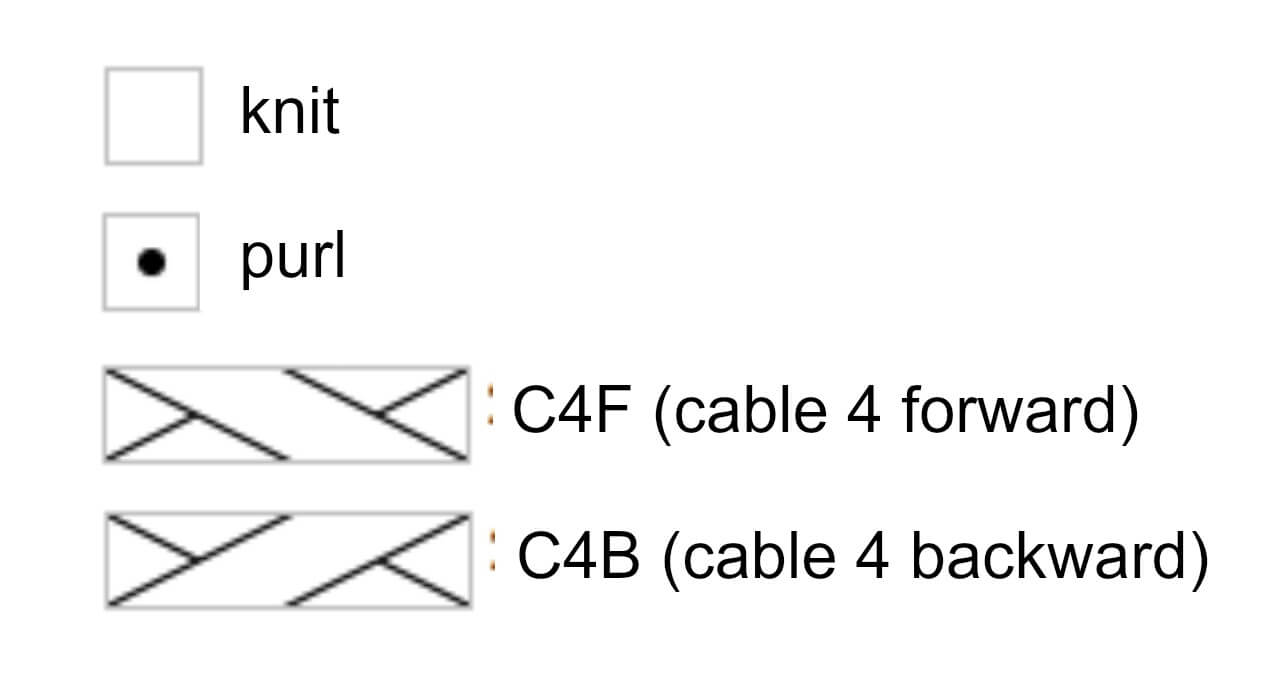
As you can see from the key above, the reason the stitch is called C4F is because it’s a cable stitch (C), there are four stitches in the block (4) and you’re bringing the stitches forward (F). This is the point where you’ll need your cable needle.
1 To complete your C4F stitch, slip the first two stitches of the block purl-wise onto your cable needle and hold those stitches in front of your work.

2 Now, keeping the cable needle in front of your work, knit the next two stitches of the cable block.
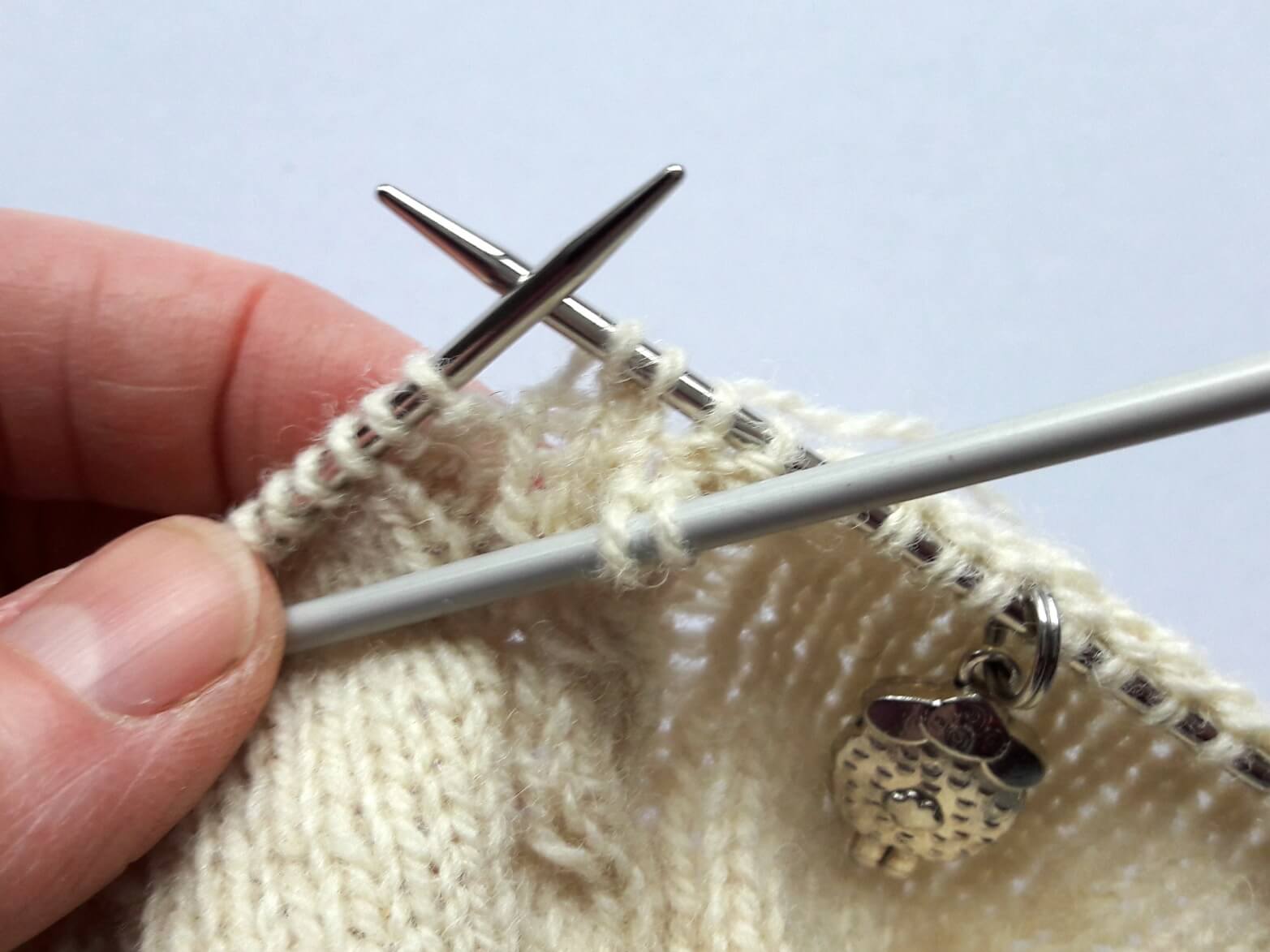
3 Next, you need to knit the two stitches off the cable needle and back onto your right hand needle. Don’t worry if it feels a bit tight, it will sort itself out on the next round.

You’ve completed your cable stitch! You can see how the stitches have twisted to form the cable. Easy, eh?

Now I’m going to show you how to do the C4B stitch. It’s very similar to the C4F – it’s a cable stitch (C), there are four stitches in the block (4) but this time you’re taking the stitches backwards (B). You’ll need your cable needle for this stitch too.
1 To complete your C4B stitch, slip the first two stitches of the block purl-wise onto your cable needle and hold those stitches at the back of your work.

2 Now, keeping the cable needle at the back of your work, knit the next two stitches of the cable block.

3 Next, you need to knit the two stitches off the cable needle and back onto your right hand needle. Don’t worry if it feels a bit tight, it will sort itself out on the next round.

You’ve completed your next cable stitch! You can see how the stitches have twisted to form the cable but this time they’re twisting in the opposite direction.

Here’s the video tutorial for the C4F and C4B cables:
Continue to knit each round until you reach your desired length before the start of your heel (for me, this was 9 blocks of the 6 round pattern which makes 70 rounds including the rib) ending with round 6.
Heel Flap
The heel flap for this sock is created with crossed rib stitches which are knitted without a cable needle. There are 3 stitches in this pattern. If you have more or less than 64 stitches in your heel flap, you will need to either add or remove crossed stitches.
If you prefer to make a heel stitch heel flap rather than a crossed rib stitch one, you can follow the instructions in the Sockalong tutorials to do this.
To start the heel flap, we need to knit across the top of the foot stitches to work on the back section of stitches:
Next round: K4, P2, K4, P2, K8, P2, K4, P2, K4 (these are the top of the foot stitches from row 1 of the cable pattern) and create the heel flap as follows:
Change to 2.5mm DPNs if you are using a short circular needle. You are going to create the heel flap from half the number of stitches that you cast on, so if you have cast on more or less than 64 stitches, remember to adjust the number of stitches when you start the heel flap.
I’ll show you how to do the crossed rib stitch (cross2RK)below:
Row 1: K2 (cross2RK, P1) until you have 32 stitches on your needle, turn.
Row 2: Sl1, P to end, turn.
Row 3: Sl1, K1, (cross2RK, P1) to end, turn.
1 To make your crossed rib stitch, start by knitting into the second stitch on your left hand needle like this …
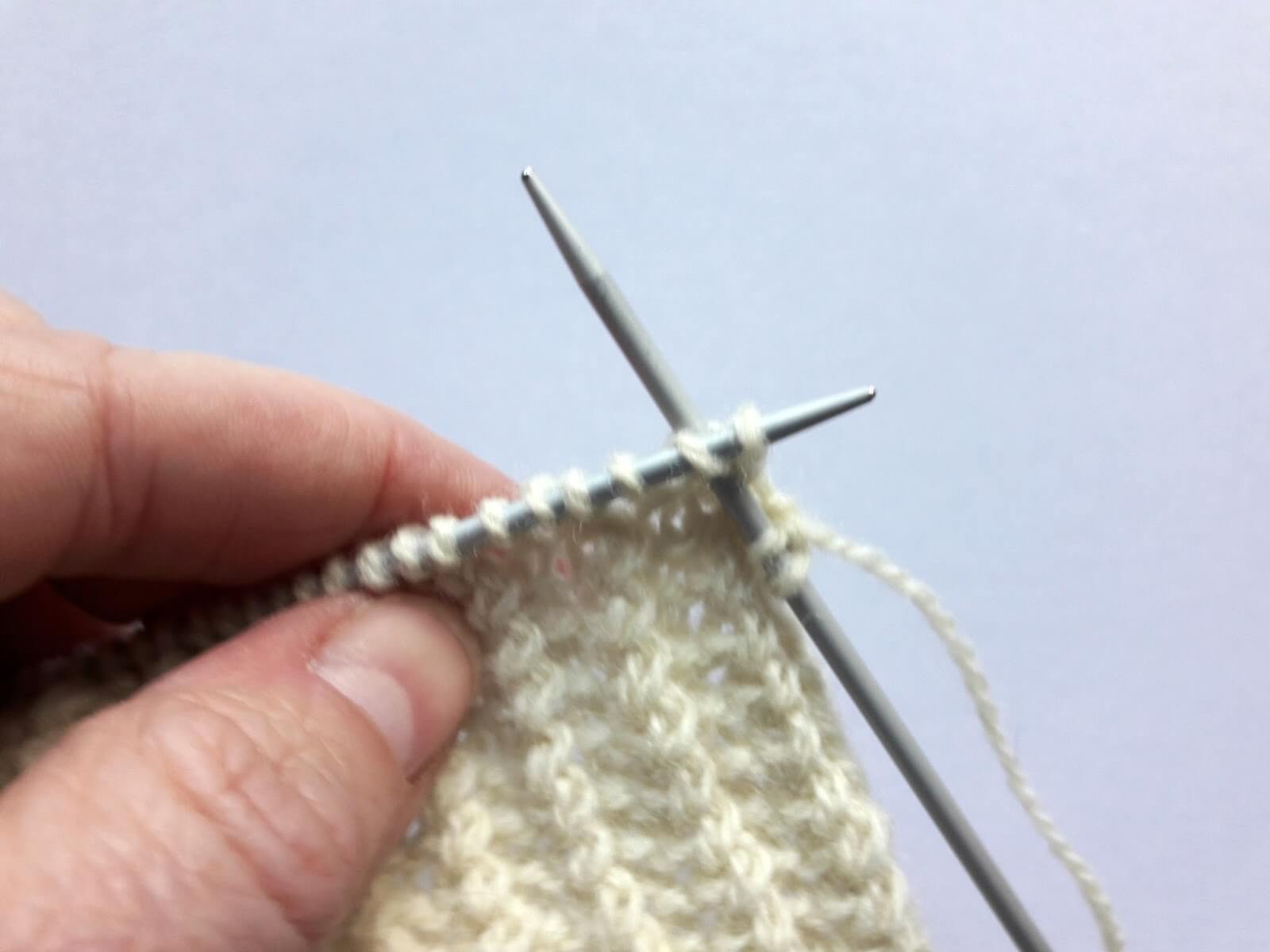
2 Pull the yarn through but don’t try to slide the stitches off the needle …
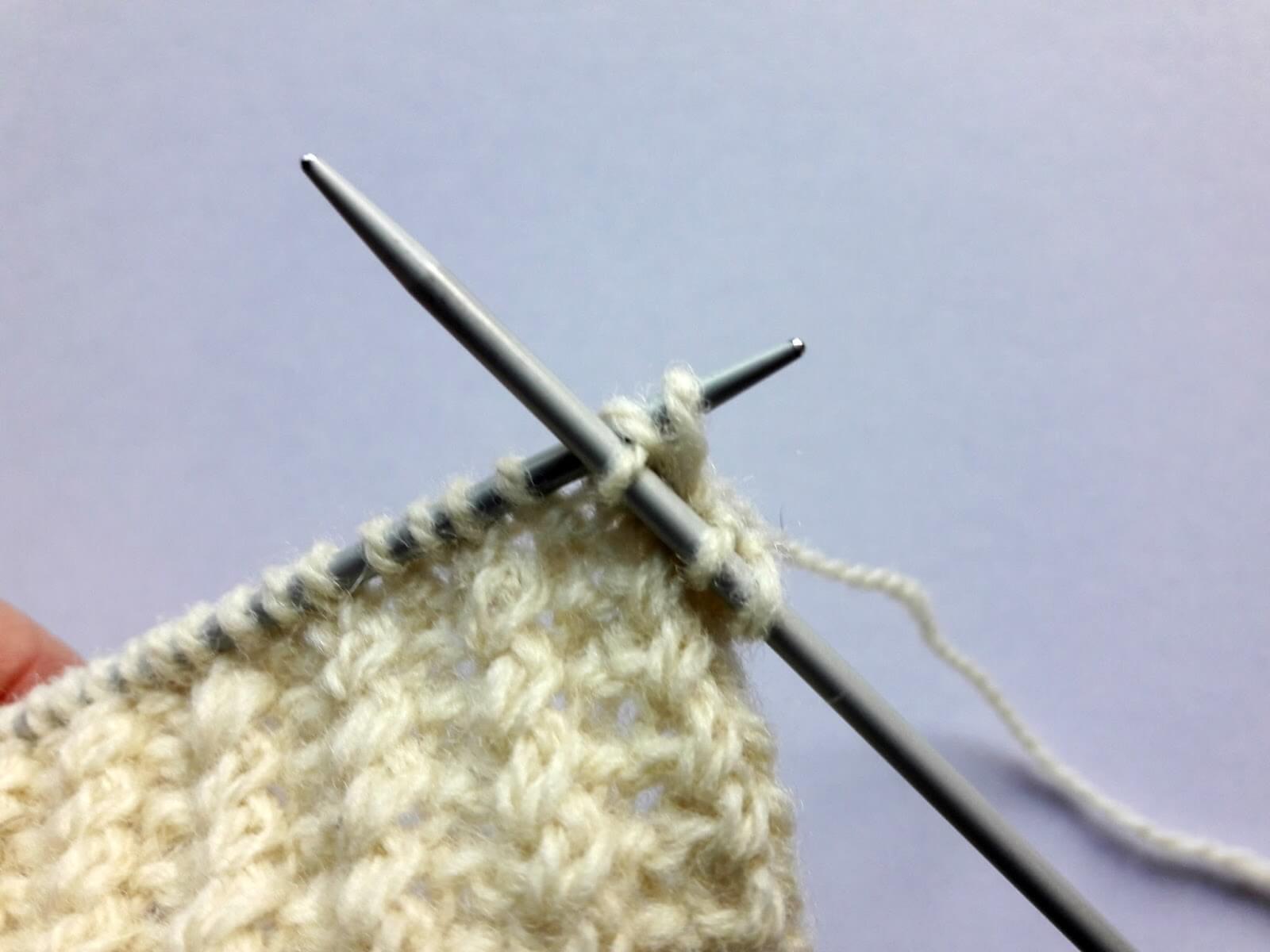
3 Instead, knit into the first stitch on the left hand needle. It’s a bit fiddly until you get used to it so relax your hands and pull a bit more yarn through from the first stitch if you need to …
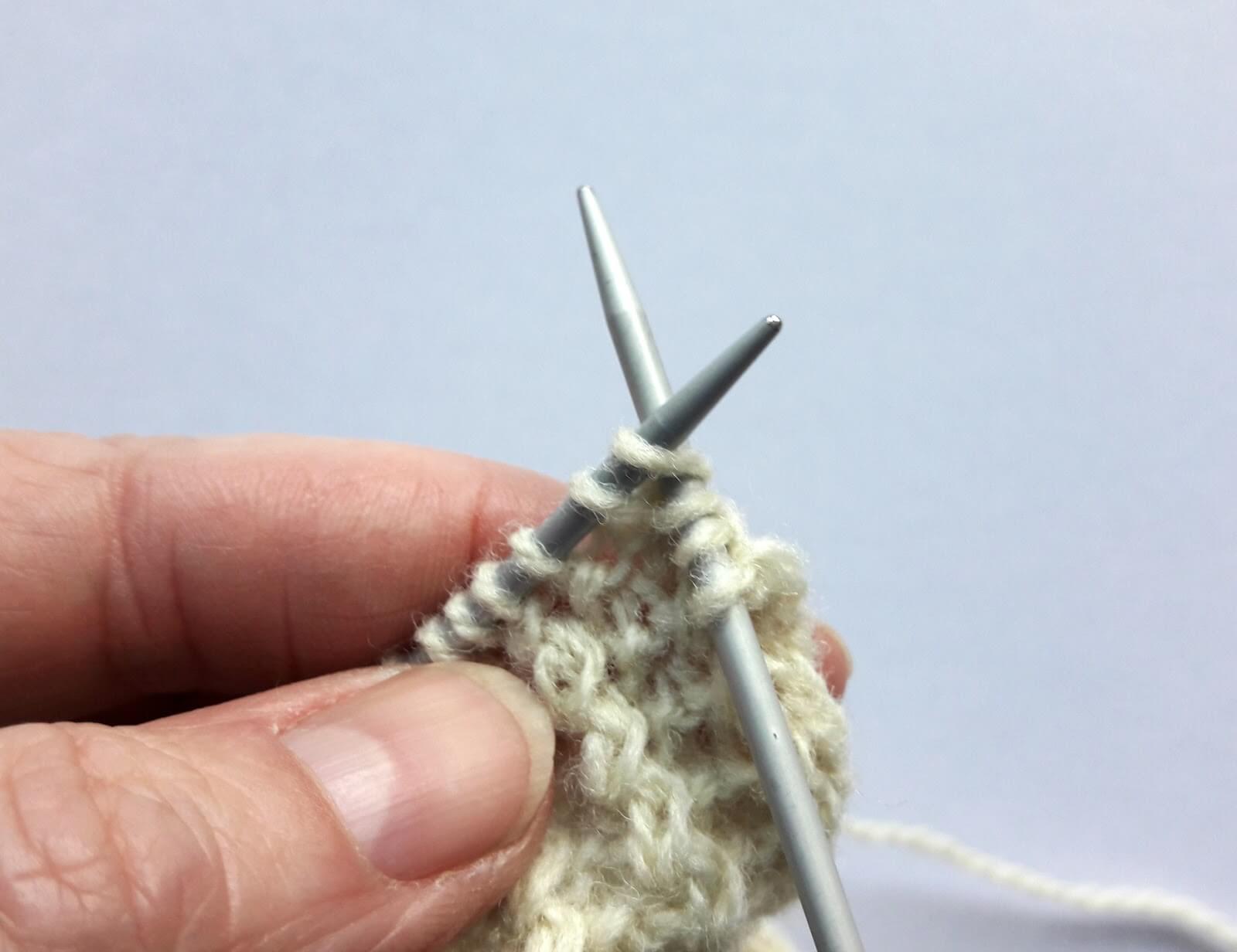
4 Pull the yarn through …

5 And slide both stitches off your left hand needle onto the right hand needle.
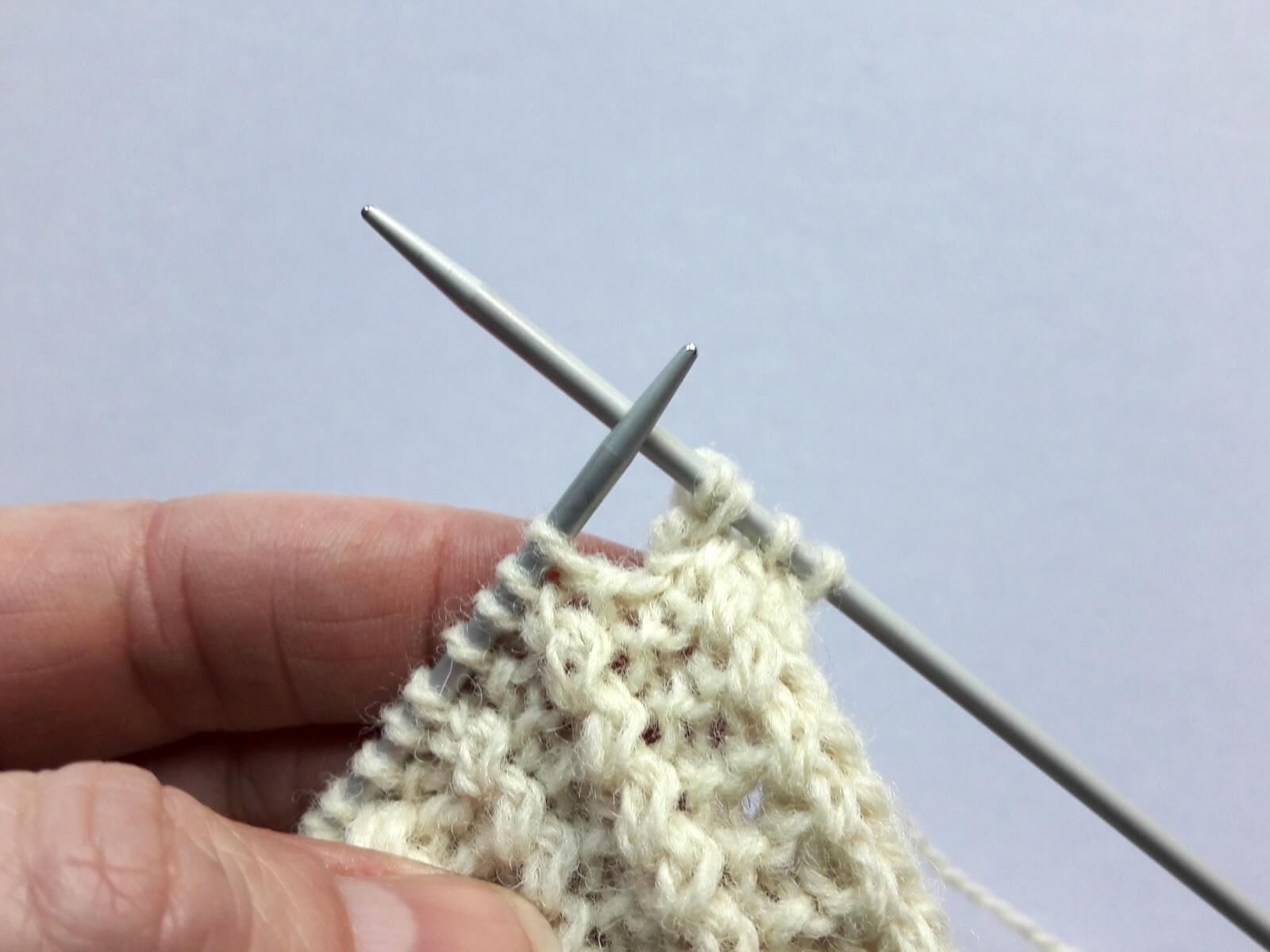
Repeat rows 2 and 3 until your heel flap measures approximately 2 1/2 inches (6cm), finishing on row 3 (for me, this was 29 rows but it will depend on your yarn). If you want to make the heel flap longer, continue knitting rows 2 and 3 until you reach the desired length, but remember that you will need to pick up more stitches to create the gusset.
This what your heel flap will look like on the outside …

and on the inside. Don’t worry if your heel flap seems to lean to one side, it will straighten up as you pick up the gusset stitches.
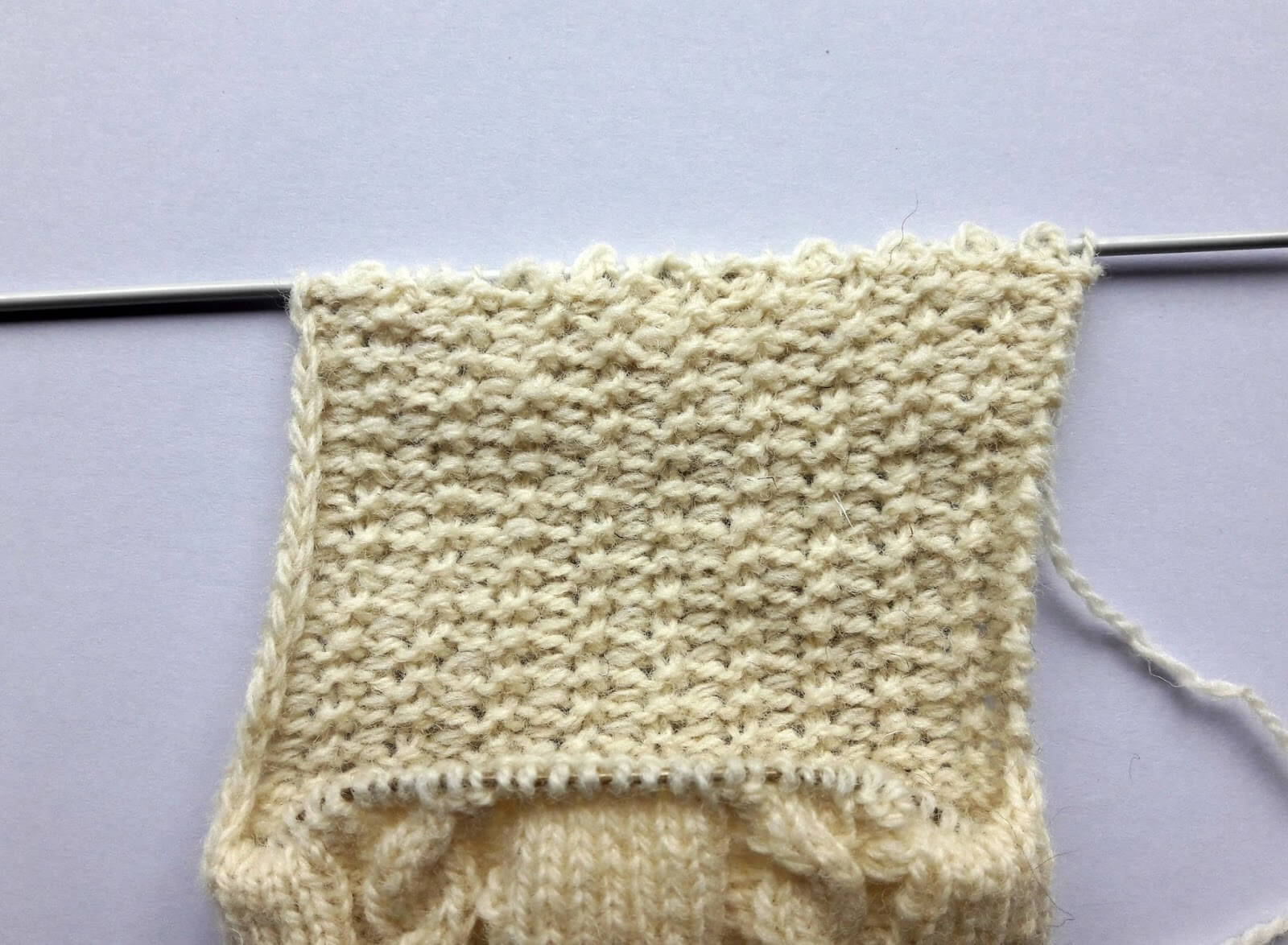
The video for creating the heel flap is here:
Turn heel
Now we’re up to the fun part! This is where your sock starts to look like a sock. Some people do worry about this bit, but just take it slowly and you’ll be fine.
*For a larger or smaller sock, you will need to alter the number of purl stitches in the first row of the heel (marked in bold below), increasing by 1 stitch for each block of 4 stitches extra that you cast on, or decreasing by 1 stitch for each block of 4 stitches less than 64 stitches. For example, if you cast on 68 stitches, your first row would be Sl1, P18, P2tog, P1, turn*
Row 1: Sl1, P17, P2tog, P1, turn
Row 2: Sl1, K5, SSK, K1, turn
Row 3: Sl1, P6, P2tog, P1, turn
Row 4: Sl1, K7, SSK, K1, turn
Continue in this way, adding one stitch between slip stitch and SSK or P2tog on each row until all of the heel stitches are used (ie, Row 5: Sl1, P8, P2tog, P1; Row 6: Sl1, K9, SSK, K1 etc). Note: You’re not making any new stitches, you’re simply adding one stitch to the number in the centre each time you decrease.
The video tutorial for the heel turn is here:
Knit across the heel stitches if required to bring you to the left hand side of the heel ready to pick up 1 stitch for every 2 rows knitted (I picked up 17 stitches). Remember that if you made the heel flap bigger you will need to pick up more stitches. Knit across the top of the foot in pattern – you will be on round 2 (I usually knit across these stitches on my circular needle at this point), place marker, then pick up and knit 1st for every 2 sts knitted up the other side of the heel. Knit across the top of the heel then shape gusset as below, placing your second marker at the end of the first set of picked up stitches.
Note: If you are using DPNs and/or have placed your top of the foot stitches on a stitch holder, you can arrange the needles as follows: Needle 1 for stitches across heel, Needle 2 for picked-up stitches down left side of foot, Needle 3 for stitches across top of the foot (knit stitches off the stitch holder if required), Needle 4 for picked up stitches on the right side of the foot. You may find that stitch markers are not required at first.
Shape gusset
Round 1: K to 3 sts before the marker, K2tog, K1, slip marker, knit to next marker, slip marker, K1, SSK, K to marker.
Round 2: Slip marker, knit to next next marker, slip marker, knit to 3 sts before marker.
Round 3: K2tog, K1, slip marker, knit to next marker, slip marker, K1, SSK, K to marker.
Repeat rounds 2 and 3 to shape the gusset and continue in this way, decreasing by two stitches at the gusset on every other row until there are 64 stitches on the needle. You can see the line of the gusset quite clearly here:
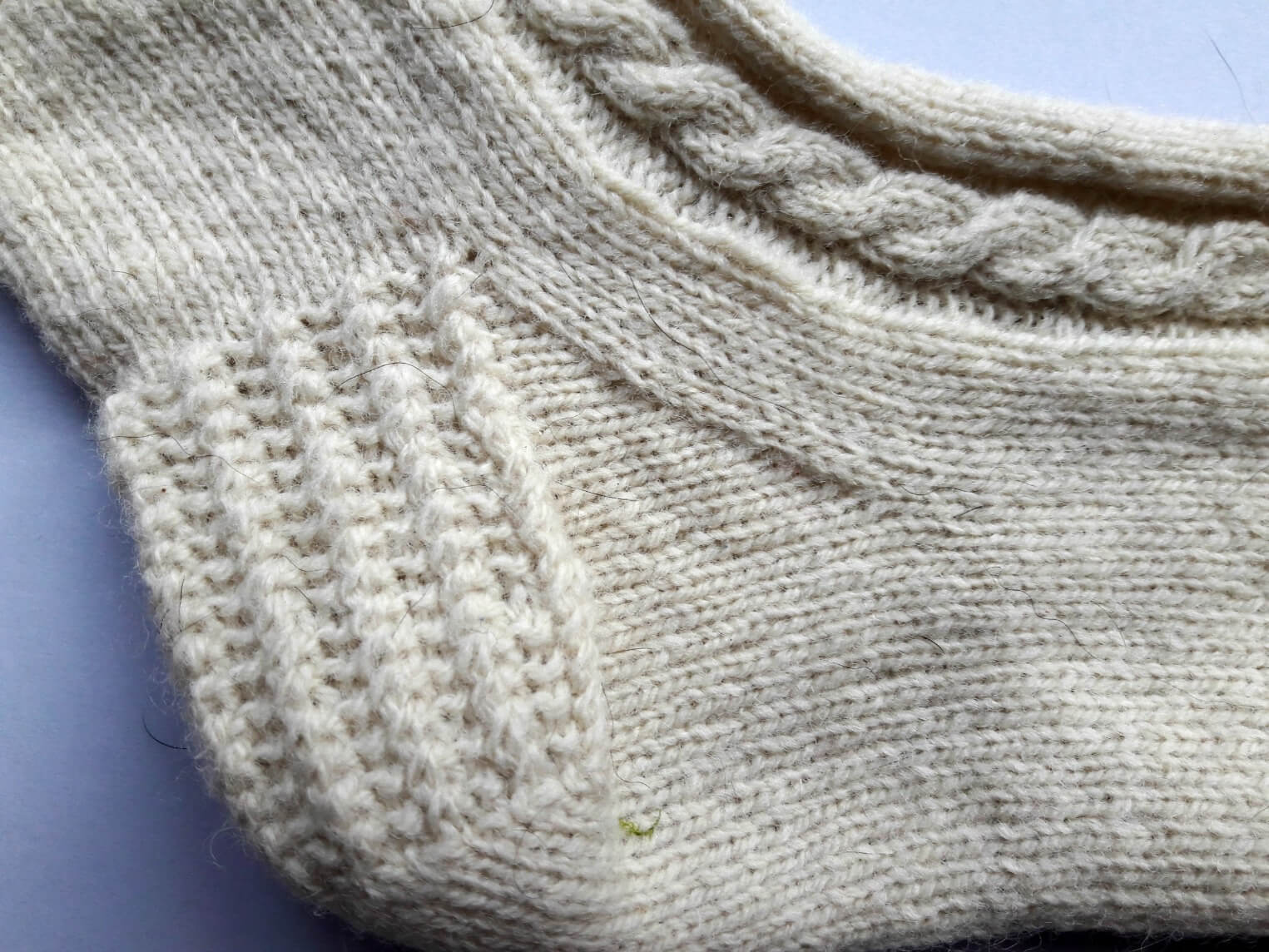
The video tutorial for the gusset is here:
Once you have 64 stitches again, continue to knit each round in pattern until you reach approximately 2 inches (5cm) before the desired length of your sock ready to start the toes. (For me, this was 11 blocks of the pattern which is 66 rounds.) You’ll need to use two markers for the toes to indicate the decreases, so you’ll want to be sure that you get them in the right place. This should be quite easy as you’ve had the pattern block across the top of your foot so you should be able to see where they should go, but do take a minute to check.
Don’t be afraid to try your sock on before decreasing for the toes and when you measure your sock, make sure that you are standing up as you need your full weight on your foot. Sometimes you have to do more rounds than you might think to get the length, but it’s worth make sure that your sock is the right length for your foot otherwise it will pull against your toes and also pull your heel under your foot – neither of which are very comfortable!
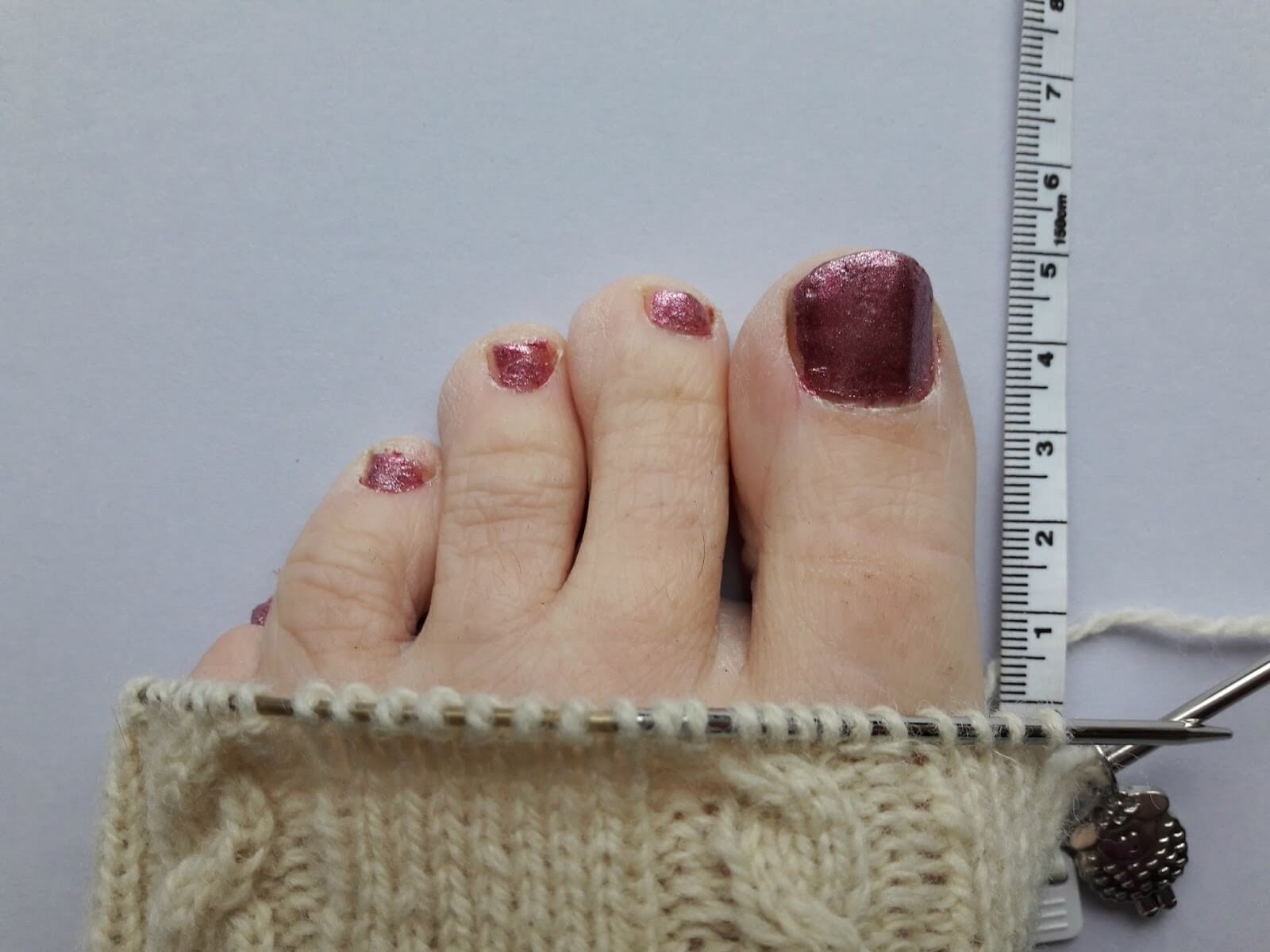
Toes
At some point whilst decreasing for the toes, if you are using a small circular needle you will need to change back to DPNs as the number of stitches becomes too small for the circular. Alternatively, you could use a larger circular needle for magic loop and follow the instructions in the Sockalong tutorials for magic loop at the toes. It’s up to you when you choose to do that, and how you distribute the stitches across the needles; just keep following the pattern as set below. Create the toes as follows:
Round 1: K1, SSK, K26 sts, K2tog, K1, place marker, K1, SSK, K26 sts, K2tog, K1
Round 2: Knit one round, slipping markers as you come to them
Round 3: K1, SSK, K to 3 sts before marker, K2tog, K1, slip marker, K1, SSK, K to 3 sts before marker, K2tog, K1
Repeat rounds 2 and 3 until you have 28 stitches left and divide these between two needles so that front and back of your socks match (14 stitches on each needle).

Grafting the toes with Kitchener stitch
This is another part of the sock-creation that some people aren’t so keen on, but again it’s not too bad if you take it slowly. Cut a long length of yarn and thread it onto a wool needle. I’m giving you right-handed instructions here.
The first two steps are set-up stitches which give some people an “ear” on the side of their sock so if you want to, you can miss out the first two steps and start at step 3.
1 Hold the two DPNs with your left hand. Insert the wool needle purl-wise into the first stitch on the front DPN and pull the yarn through. Don’t take the stitch off the DPN.
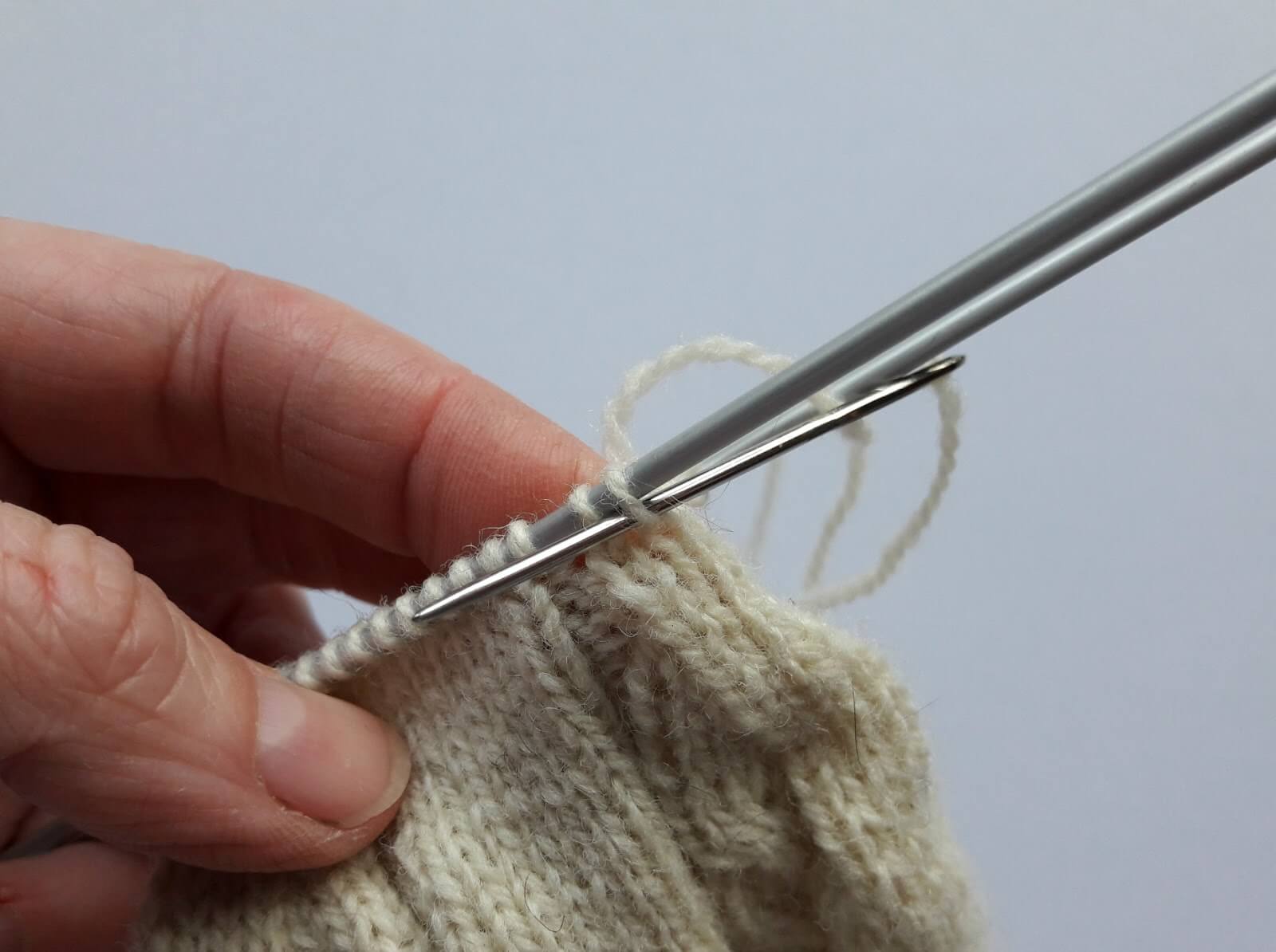
2 Insert the wool needle knit-wise into the first stitch on the back DPN. Don’t take the stitch off the DPN.

3 Insert the wool needle knit-wise into the first stitch on the front DPN and slip it off.
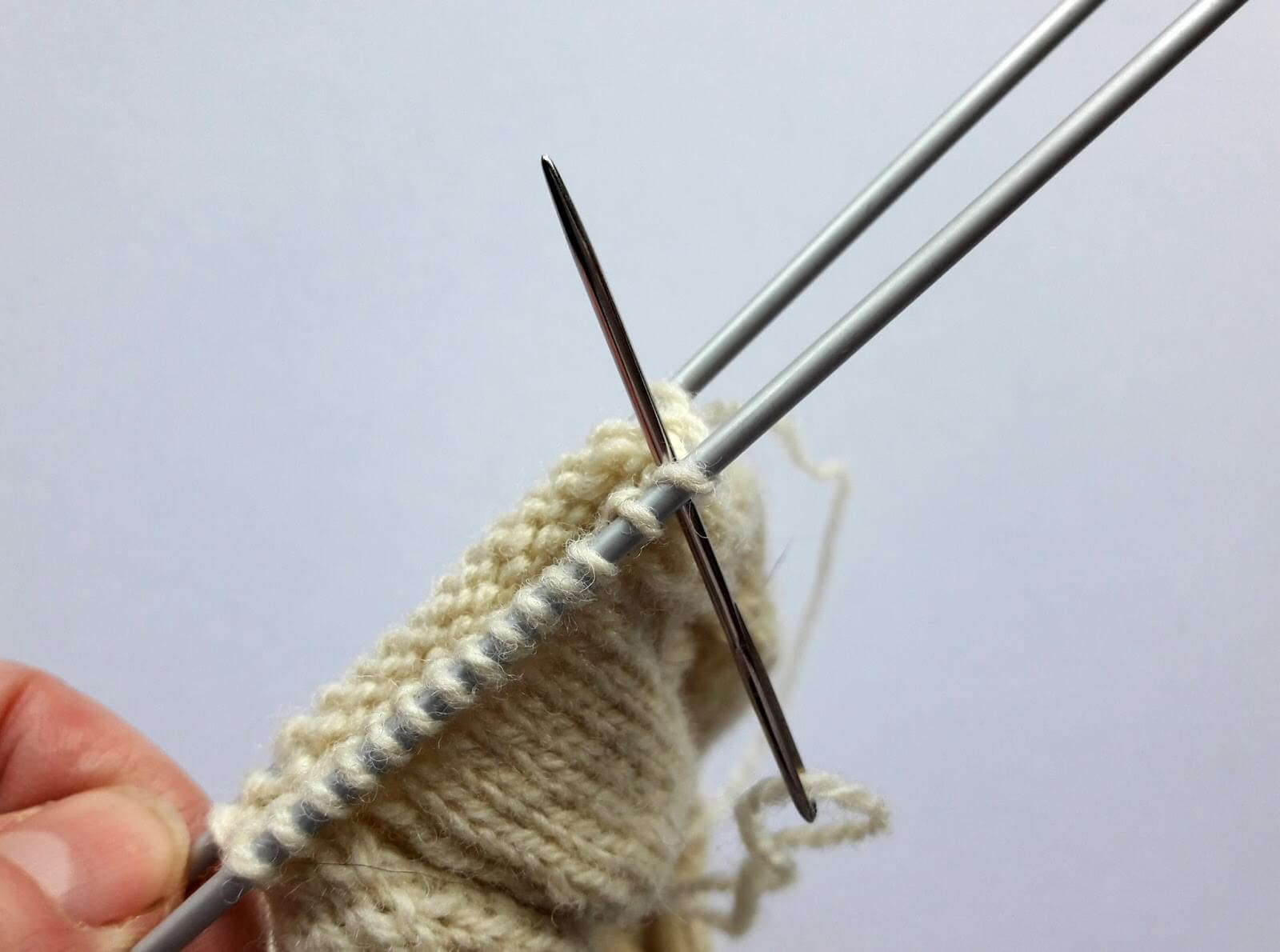
4 Insert the wool needle purl-wise into the second stitch on the front DPN and don’t slip it off.

5 Insert the wool needle purl-wise into the first stitch on the back DPN and slip it off.

6 Insert the wool needle knit-wise into the second stitch on the back DPN and don’t slip it off.

Repeat steps 3 to 6 until you get to the last two stitches on the DPNs. You will already have taken the yarn through the front stitch so after you have taken the yarn through the back stitch, you can slip both stitches off the DPN. The single yarn thread through the first stitch will be strong enough to hold it and it will sit flatter when you weave the end back into your sock.
Weave the end securely into the sock and cut the yarn.
You can find the video on grafting the toes with Kitchener stitch here:
Finally, sew the seam together at the cuff of the sock where you knitted your first two rib rows on DPNs, tightening it up if you need to and your first sock is done!
Now all you need to do is make a second sock and your pair of Easy Cable Socks is finished!
If you’re on Ravelry, I’d love it if you added your project so that I can see your socks, and don’t forget to show them off if you’re in the Winwick Mum Knit n Natter Facebook group too!
This sock pattern and tutorial is free and will always remain so, but if you have enjoyed using it and would like to buy me a brew, it will be much appreciated! You can find the donation button on the sidebar on the left hand side. Thank you! xx
You can also find this pattern and other tutorials and exclusive patterns in More Super Socks.
This pattern copyright © 2017 Winwick Mum (updated 2021). All rights reserved.
Not to be included in any collection or used for profit without written consent of Winwick Mum.



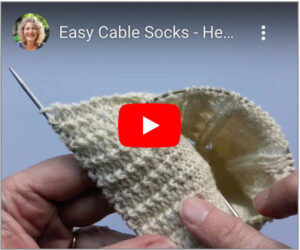

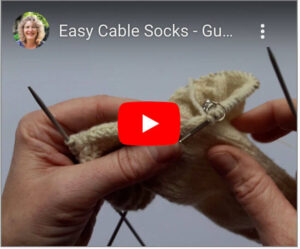

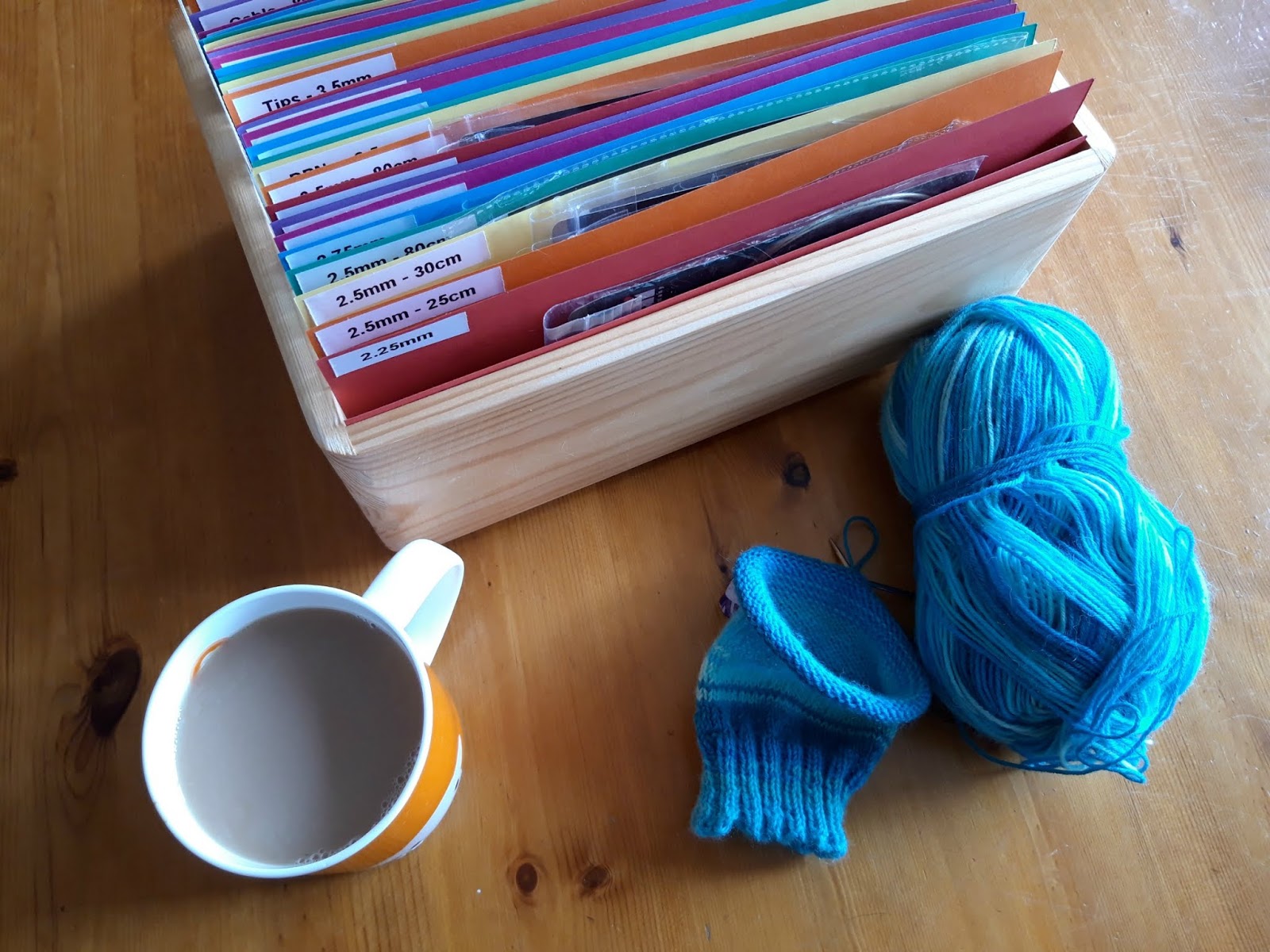

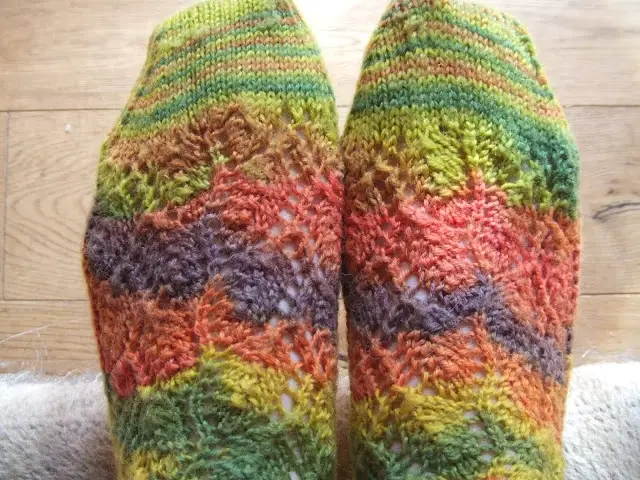
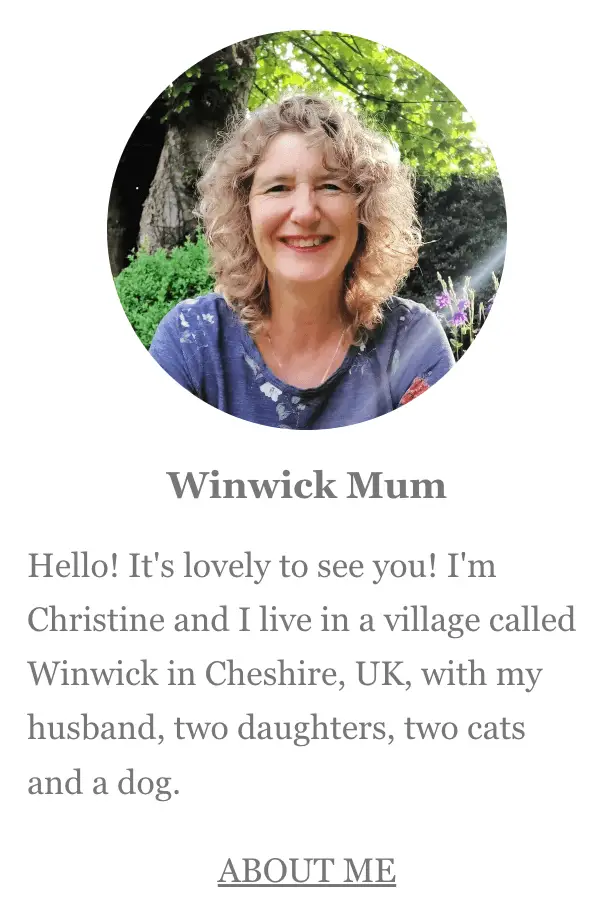

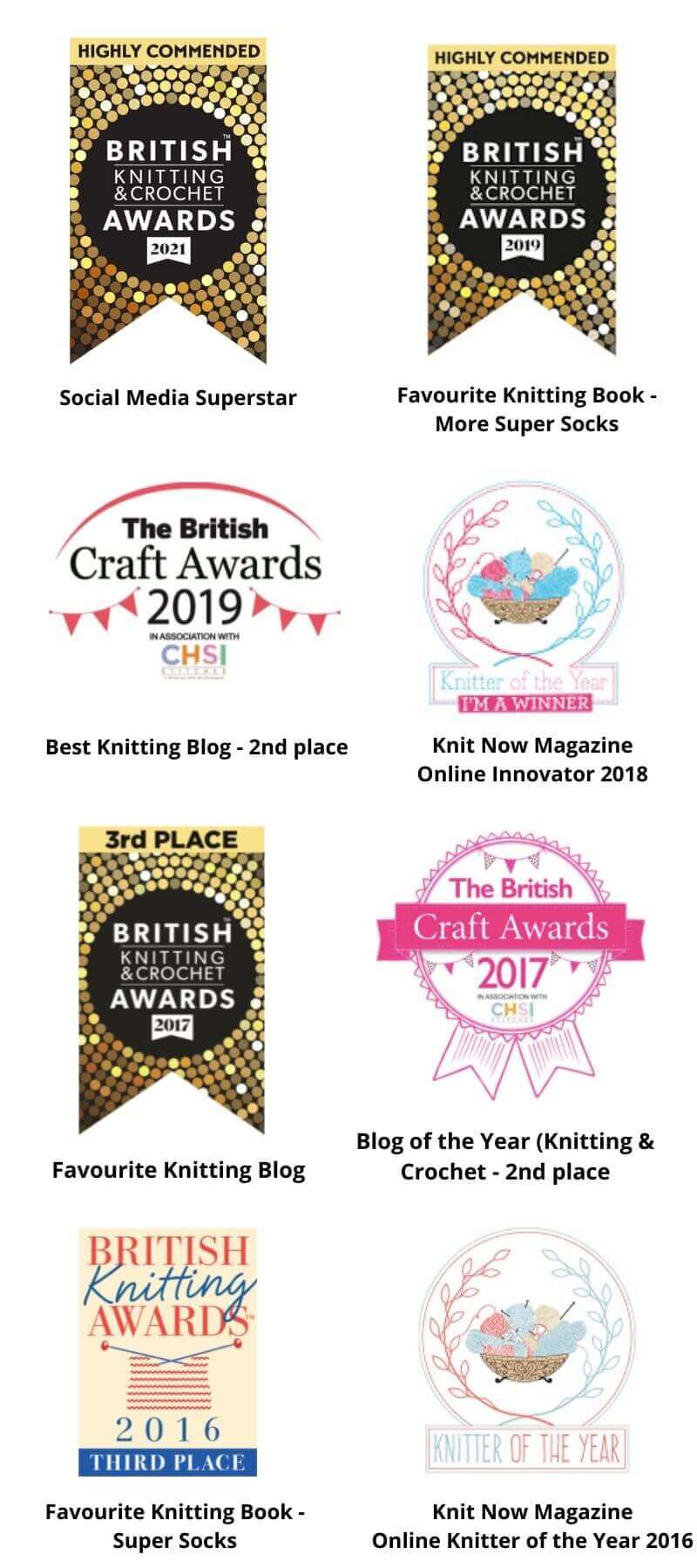



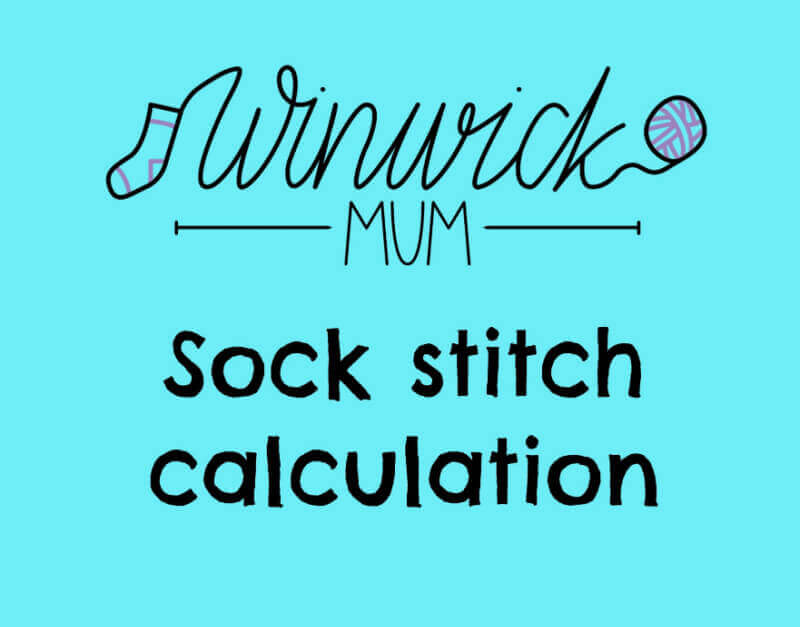
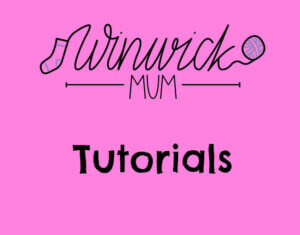




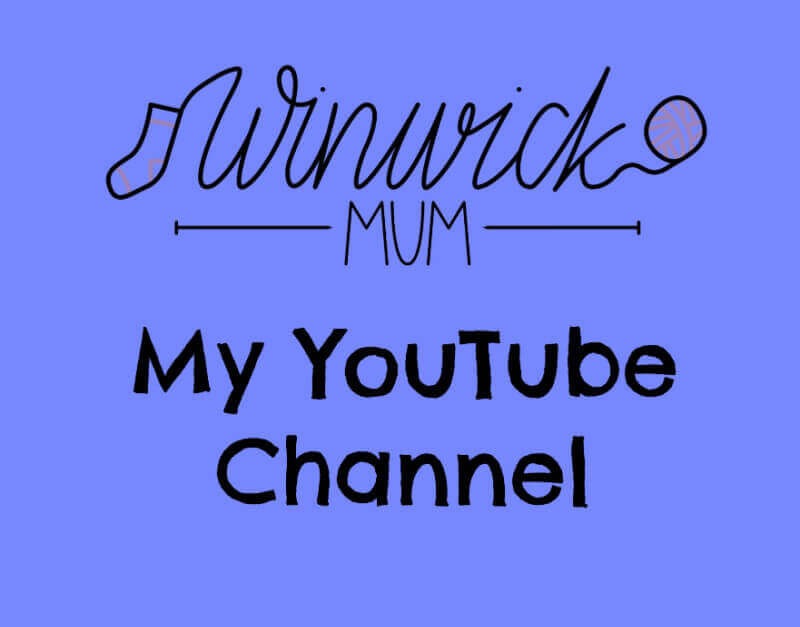
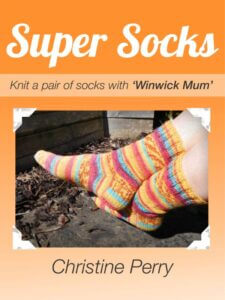
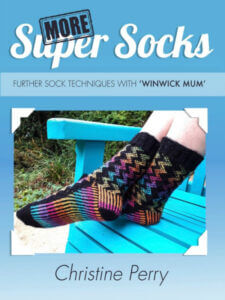

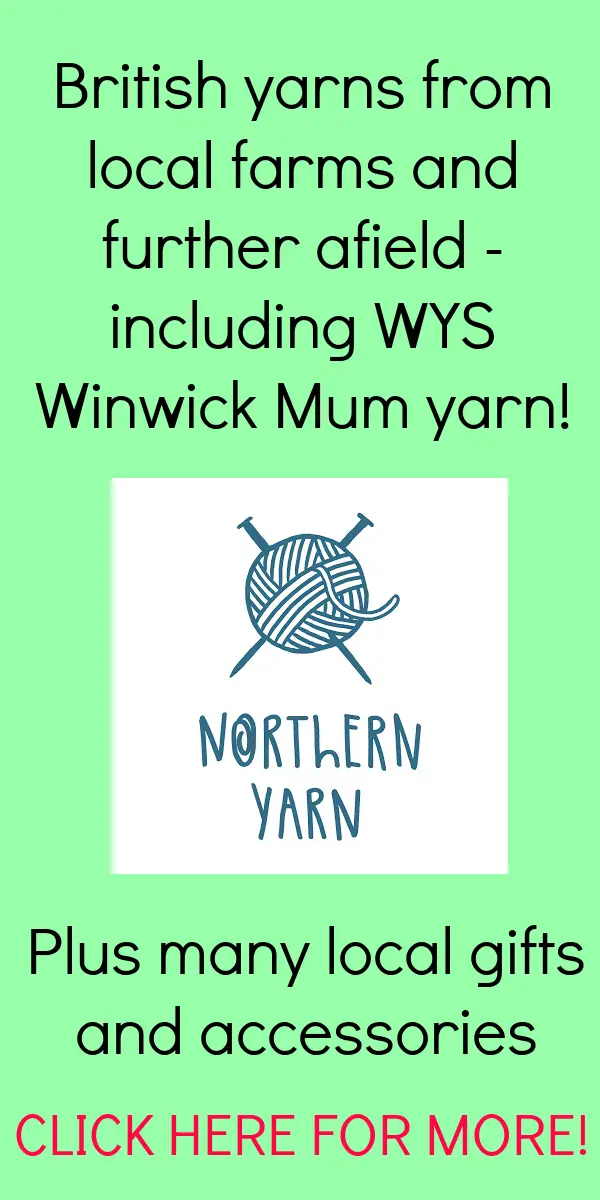

Wow that was quick thankyou so much for this pattern I am going to try this one
That's brilliant! xx
just had a quick look and this looks great! especially for visual learners like me. love that heel texture and how its done. I hope sometime you will do some video instruction for your first basic sock as I still don't feel confident with picking up stitches for the heel and how many rows to do..hence only one a half pairs to date!
Yes, that's the plan, Doreen – I'm hoping to get some videos made to go with the Sockalong tutorials this year as you're not the only visual learner who's asked about them! 🙂 xx
You are a very clever and generous lady. Having a blog myself I know how just long it takes to scrabble together just a basic post – that must have taken you ages!!! Not only have you given us an in depth written post with heaps of photos, but videos too this time! I'm still ploughing my way through making my basic socks from your first tutorial but I am sure I will give these ones a go. Thankyou, and well done xx
Thank you for your lovely words, Claire! Yes, it did all take a bit longer than I anticipated, but a lot of that was due to the videos being something new. I'm hoping that next time (because there will be a next time – the monster has been unleashed! 🙂 ) it'll all be much quicker xx
Thank you so much Christine I can't wait to get started on these it must have taken you ages to put this all this together it's much appreciated. 😊
Quite a while, Linda, but definitely worth the effort. I'll look forward to seeing your socks! xx
Thank you
You're very welcome xx
Once I master the plain sock I will definitely be back to tackle this one! Might be a while but I will get there!
I know you will. There's never any rush; socks are very forgiving of however long it takes you to knit them 🙂 xx
A perfect pattern for a cable lover like me and so much information, thank you for your hard work.
That's great to hear, Jenny, thank you! xx
Thank you Christine, I'll have to give these a go once the pile of WIP's is slightly reduced!
Does the pile of WIPs ever get smaller? I don't think mine does – there's always something else that I NEED to cast on! 🙂 xx
I can't wait to work on this pattern/tutorial you've taken so much time to produce. Thank you so much Christine. Lucy got me interested in knitting socks again, but it was you're wonderful tutorials that helped me get going and complete several (8 pairs) of your socks last year. After printing out a few of the stages of your instructions, I thought this is silly! and bought the book! When I've completed my Moorland blanket I'll delve into my overflowing sock yarn drawer (I blame you and Lucy for my not being able to open it without feeling guilty) and choose something to do justice to this lovely cable pattern. Keep up the great work. Jude
Thank you for your lovey words, Jude, and thanks for buying the book too! Never feel guilty about your sock yarn drawer – see the potential for warm toes and fabulous gifts instead! 🙂 xx
You say to slip the stitches knitwise onto the cable needle but it looks like you're slipping pairwise.
You're quite right. I've obviously had a brain malfunction at this point – thank you for spotting it! I've updated the blog and the PDF and I'll alter the video too as I've done it there as well xx
my brain malfunctioned when I tried to spell purlwise….another question. If you end on round six of the pattern when starting the heel flap, why do you start on round 2 of the pattern when knitting across the front stitches when setting up the gusset rows? That's where I am now, so I'll wait for your answer rather than goof up and have to tink….I'm enjoying this so much!! Cables really ARE easy–thanks!
Hi Lily, it's because you knitted round 1 of the pattern when you worked across the top of the foot stitches to start the heel on the "back" section. Cables are great when you get going, aren't they? 🙂 xx
Somehow I've shown up as K and as Lily Hill (which is my day lily farm facebook page….) anyway, I should have picked up on that, but when you said 'knit across' that's exactly what I did!! I read and follow directions…but I don't use common sense at times. First I panicked, but then realized it should be an easily fixed mistake. I so much appreciate your quick responses. Feels like I have a teacher sitting right beside me!
Apologies for misnaming you! I'm glad you're sorted with the pattern rounds – I really had to think about it, and especially when I was recording the videos as you do so much on automatic pilot that it's not always easy to remember to say what you're doing! xx
Lily/K–it's the drop down menu's fault! And, I guess I was on auto-pilot as well. Once I looked to see how to fix the row, I realized I'd knitted the pattern after all. Still going strong, and enjoying it, even though I'm not crazy about my yarn. I can't wait to see our next assignment!!
Ha ha, glad it's all sorted! Hopefully you'll love your yarn more as you finish your socks 🙂 xx
Thank you so much Christine. Like the others have said, What a lot of work you've done! What I like is that you've given us both the step by step instructions (with great photos) as well as the videos. My pet peeve is when there are only video instructions. If I've taken the project along in the car and run into a hitch I can always try to figure it out with the printed-out written instructions. Not so if there's only a video. I look forward to making these socks. Thanks again!
Thanks for your lovely words, Ruth! xx
Just wondering Christine, am I missing something, or is it not possible to print out the tutorial? I'm going on holidays this weekend and would love to take this project along.
Hi Ruth, no it's not possible to copy and paste from the blog but you could always do a print screen of the bits you think are most important. Once you get going you'll find that you won't need much more than the PDF pattern as the sock is constructed the same was as the Sockalong sock so if you've made that one, this sock will feel familiar xx
Hi Christine. I'm doing the Kitchener stitch now and following your pictorial tutorial. You say to repeat steps 2 and 3 until 2 st from the end, but in the video you say to repeat 4 steps. I'm so brand new at this, and wondering if it should read to repeat steps 2, 3, 4, and 5?
You've spotted a typo – thank you! You should repeat steps 4-6 to complete the Kitchener stitch, steps 1 and 2 are just the set up stitches. I've altered the instructions now, thank you! xx
Thrilled to have learnt cable stitch ,but oh dear ,such struggle with heel flap ! No matter what I do stitches are so tight that cannot pull yarn through. Each cross stitch row takes half hour ! Please advise ,have watched your video repeatedly and you make it look so EASY ! Help
Hi Clari, it does sound like there's something not right there. When you do your second row, are you just slipping the first stitch and purling the rest or are you slipping and purling across the entire row? That can make the heel flap very tight. Alternatively, you could try knitting your purl row slightly looser so that the stitches are bigger when you come to cross them over. Don't make them so big that you have flapping stitches, but just a little looser than normal can make all the difference. Let me know if that helps! xx
Hi Christine , thank you for your advice ,have loosened purl stitches and pulled yarn through cross stitch ,as you advise in instructions ,and yes …… success . Suddenly it all works and looks and feels right . Thank you again . Have actually finished flap ,now for cuppa & rest before start next bit xx
Oh fantastic! You'll feel as if you get to the toes in no time – counting in rounds of 6 every time makes your sock grow really quickly! 🙂 xx
Hi Christine. After making two pairs of socks using your other tutorial, I feel brave enough to tackle this pattern. So far, so good!! Just wondering if you have used 64 stitches in this pattern for a reason. The other pattern you used 60 stitches. I take it that they are both medium size sock patterns. I actually made the other two pairs a little short for myself. I made the mistake of not placing the heel turn in the correct place on my heel when I was trying it on. Luckily I have plenty of family to give them to. I have done 5 rounds of pattern so far and they look good. Anyway, I was just wondering why 64 stitches and not 60. Thankyou. Appreciate all of your work.
Hi Vicki! I've used 64 stitches because the cables will pull the fabric of the sock in slightly; it's just something that cables do so any cable pattern will be a little bit wider to accommodate this. You'll find that your sock will fit the same as your other 60 stitch patterns. I'm glad your sock is looking good! xx
Thanks Christine. I wondered if that might be the reason. I have completed 7 cables now and loving it. Here is Australia the winter will be here in a couple of months so I will be prepared! Lol! Thanks again.
That's great – cables are really quite easy, aren't they? I've enjoyed seeing photos of your Australian summer that have been posted in the Winwick Mum Knit n Natter Facebook group recently – it amazes me that we are all on the same planet and yet your seasons, plants and animals are completely different to what we have here! xx
Hi, thanks for tutorial, I learned on 2 circular needles, I can still do this sock pattern ,just divide stitches in half till heel then let one needle rest until pickup to do foot ?
Hi Marywallis, yes you can knit these with 2 circular needles in the way you've mentioned – as long as you have the number of stitches that you need you can knit them in your preferred method. Hope that helps! xx
Hi Christine, thank you for all your hard work and generosity for sharing so willingly your patterns and expertise. You say the basic cable pattern is 18 sts wide (in adjusting the size section) – should that be 16 (8 each side cable)?
Hi Khursheed, thanks for getting in touch! I think the confusion comes from the fact that firstly, you've found a typo – thank you for spotting that! – as the whole pattern block is actually 32 stitches for a 64 stitch sock (this includes the knit blocks in the middle and on both sides – originally I wrote it as a 28 stitch block hence the typo …), but also because the cable block itself is only 8 stitches and the two cable blocks are surrounded by blocks of knit stitches which is where you can adjust the pattern.
I deliberately wrote the pattern in that way to try to make it as easy as possible for people to use it with any size of sock. The important part is the cable block as I am trying to show that they are not as difficult as some people might worry that they are, so it really doesn't matter how you configure the knitted blocks to fit your own sock size as long as you are able to understand how the cable works.
I’ll change the text to remove the typo – thanks again for spotting it! xx
thanks
Hi Christine. Well I have completed my first cabled sock. I am really happy with it. I found it a bit fiddly when doing the toe but all good in the end. I have realized that my first 2 pairs of socks, which I used your basic sock patter for, I made too short for me. When trying them on before I started the toe section I had not placed the turn of the heel in the correct place on my foot. One pair went to my daughter and one pair to my sister. Luckily they have smaller feet than me. Anyway, I have learnt my lesson and this cabled sock is a perfect size for me. Practice makes perfect hey!! Thanks Christine.
That's brilliant! And I'm glad that you were able to re-home your other pairs too, so the next pairs you make for yourself should be perfect xx
Christine, I forgot to ask about the Kitchener stitch. You said to repeat row 4-6. Did you mean 3-6? Thanks
That's exactly what I mean, thank you 😉 xx
Fab blog! I have knitted quite a few pairs of stocking stitch socks, have discovered it is a great distraction on long journeys. My delightful daughter has brought me some baby alpaca double knitting yarn home from her trek in Peru, and I would like to make myself a pair of your lovely easy cable socks. Do you have any advice as to how do I decide what size needles and how many stitches to use? Thanks. Liz
Hi Liz, that's a fabulous gift you have there from the other side of the world! My daughter also brought me some baby alpaca DK yarn from when she went to Peru, but I'm going to use mine for a shawl – alpaca is gorgeously soft but that also means it doesn't wear very well for socks unless it's blended with something else, and it would be a shame for your hard work to end up in holes so do take this into consideration! If you do decide that you want to make the socks, it's easy to work out the stitch count with the stitch calculation from the Sockalong tutorials (there's a handy link button above on the right hand side bar) and then add 4 stitches to accommodate the cables pulling the fabric in slightly. There's also a DK version of the Sockalong pattern in the free patterns section (another handy link in the right hand side bar) so you can compare the numbers there too. I hope that helps, and good luck with whatever you decide to do with your yarn! xx
Hmm I did wonder about how durable the socks might be. I have 3 x 50g balls so sadly not enough for a shawl. Maybe time for a rethink then! Fingerless gloves? That would be a challenge 😉
You might do it with the right pattern depending on the meterage – it would be worth having a look on Ravelry. Or you could make a cowl (very popular this winter) or a hat? Xx
My mother-in-law gave me your book a while back after I told her I'd always wanted to make socks but thought they were too scary and advanced for me. I've now made two pairs (the basic sock and the beautiful cable ones) and I am officially hooked! Thank you so much for making such lovely patterns!
That's really lovely to hear, thank you for taking the time to let me now. Thanks to your mother-in-law too for buying the book, and here's to lots more socks in your future! xx
Hi, thanks for your pattern and all the work you did just to make our lives easier !
I'm gonna try to do your cable on a toes up sock
Any suggestion how to proceed for the cable… should I Start with row 6? Or just follow from row 1?
Thanks !
Hi Nathalie, I'd just start with row 1 rather than trying to work the pattern backwards. You might want to reverse the left and right sock though otherwise your cable will twist in the opposite direction when you look down at your feet but that's up to you! I hope they work out really well! Xx
Thank you for the pattern! I am also knitting toe up, do you mean reverse the left and right cable on the same sock?
Thanks,
Liz
Yes, you can do that if you want to – the cables on the Easy Cable Socks turn towards the centre of the sock so you can swap the C4F and C4B so that you also get the cables turning inwards even though you’re knitting the socks from the other way up 🙂 xx
Thank you very much!
I absolutely love your patterns and the detail you show to make it so easy. I've made your Easy Lace Sock pattern and now doing this Easy Cable Sock. I'm having way too much fun. Thank you so much for these pattern tutorials. I also have your book.
I'm so glad you've enjoyed the patterns, thank you for letting me know! And thanks for buying the book too – here's to lots of cosy toes! 🙂 xx
Hello, I have spent some lovely days with your pattern. Again I have to thank you for spreading the sock skills to the world. Oh and cable skills! Thank you! Anna x
Oh that's great, I'm glad you enjoyed it! xx
i am bummed because I can't do charts. I would love to try this.
Hi! The idea of this tutorial is to show you how to read charts if you're not comfortable with them already, but there's a written version of the pattern too so you should still be able to make the socks if you'd like to 🙂 xx
I make these all the time. These are very easy and addicting. I use yarn bee from Hobby Lobby and size 2 needles. CO 64 stitches. Comes out to fit size 6-8. LOVE THIS and you are the BEST. Xoooooooooxooooooooooo f
Ah, that's lovely to hear, I'm so glad the pattern works so well for you! xx
Hi Christine, really enjoying my new hobby! Have knitted two pairs of basic socks, one for me and one for my mum as a gift. I'm currently challenging myself with the cable sock pattern. Like you I'm a size 5 and wondered why the cable sock takes 66 rows from heel gusset to toes whereas for the basic sock it's 48 rows?
Thank you for offering these patterns for free for everyone to share. I'm pretty sure that if I hadn't have come across this, I wouldn't have had the confidence to have a go!!
Hi! I'm so glad you're getting on well with your sock knitting!
When you knit cables, the crossed stitches when you work the cable make the stitches shorter and tighter hence you need more rounds to make up the same length as you would do with plain knitting. It just gives you more chance to practice! 🙂
Hope that helps! xx
Hi, love the pattern. I'm making these socks with 60 stitches – could you please suggest the best way to adjust the heel flap pattern? Thanks, Caro
Yes, it should be quite straightforward when you get to it – you work the crossed rib stitches as far along as you can get and then knit the last stitch, and that should fit into your 30sts just right 🙂
Thanks!
OMG I think I actually understand this! Thank you SO much! I am (mostly) an old-fashioned non-video learner, and your descriptions and photos make it crystal clear.
I inherited my core stash of needles, and the cable has been clipped to the door of my freezer to remind me to learn how to use it! I surreptitiously knit my socks during lulls in Zoom, and I have completed three pairs this year (unheard of for me!) and am getting bored. Woohoo!
Hooray! That’s brilliant, I’m so glad that the tutorial has helped you. You are certainly in good company as I’ve heard of lots of pairs of socks being knitted during Zoom meetings (might even confess to that myself! 😉 – what will we do if we have to go back to face to face meetings all the time? 🙂 xx
I’m having a bit of trouble knowing when to stop the cable pattern at the toes. Do you keep going with the pattern into the toe decreasings. That’s what it looks like in the pictures, but the decreasings must eat into the pattern either side as you go down in stitch numbers. Is that right? I thought the pattern would stop at the beginning of the toe decreasings.
Also I sized down because 56 sts is what I normally make for myself but the sock seems a bit small width-wise now. Is this because it’s a cable pattern? (I wondered why the published pattern was for 64 sts instead of the usual 60).
Sorry…two questions.
Hello! Yes, if you continue the cables into the toes then you will find that the decreases eat into the cables – feel free to work plain toes if you would rather do that! Cables tend to pull the fabric in and so you’ll often find that cable knitting patterns have more stitches than they would normally to accommodate that. Sometimes it’s not necessary depending on the rest of the design but it was in this case so for your usual 56sts, you’d probably have been better casting on 60sts. You could always try blocking your sock and see if it will stretch widthways when it’s finished to save re-knitting. Hope that helps! 🙂 xx
Hi! Really looking forward to trying out this lovely pattern. Problem is that I’m attempting to use 4mm needles and casting on 48 as that is what’s working with my yarn. Is there a way of adjusting the pattern so that works? I’ve tried and tried and can’t seem to get the hang of it 😞
Yes, absolutely! You’ll have 24 sts on the “front” and “back” of your sock and the cable block will take up 8 sts per cable (4sts for the cable, 2 sts of purl either side) so that will be 16 sts in total. Taking that away from 24sts will give you 8 sts left so I would probably split that as 2sts, cable block, 4sts, cable block, 2sts per side and that will fit your stitches. Hope that helps! 🙂 xx
Thank you for the pattern! I am knitting toe up. When you say reverse the cable on each sock, do you mean reverse the cable on the same sock? So that I would knit C4B first in the row and then C4F?
Yes, that’s right. Just swap them around and then the cables should be the same way around as if you’ve knitted them top down 🙂 xx
Just made a pair of these cable socks, great pattern thank you
I’m really glad enjoyed the pattern! 🙂 xx
Hi Christine, I normally knit 64 stitch plain pattern for my daughter which fits perfectly. I have a request for a black pair to go with her Business suit. I was wondering if the same number of stitches would do in the simple cable ones to break up the boredom of plain black knitting or any other suggestions.
Thank you in anticipation
Sarah
Hi Sarah, I think it’s a great idea to do something to break up the boredom of black socks! I knit coloured heels, toes and cuffs on my husband’s and then it’s just the leg and foot that I have to knit in the dark yarn, but anything you can do to make it a bit more interesting is a great idea! If you’re going to make the Easy Cable Socks, then go up a size to 68sts as that will compensate for the way the cable pulls the stitches in. Oh, and make sure you sit under a good light as well, because trying to pick up dropped stitches in black yarn is not fun! Good luck! 🙂 xx
Thank you for your advice